 The petroglyphs are found just inside this stand of planted conifers, silviculture being an important part of the local economy.
The petroglyphs are found just inside this stand of planted conifers, silviculture being an important part of the local economy.
At nine at night I stepped out for a walk in the woods. Couldn’t sit around the house after dinner any longer and let slip away the last two hours of daylight. Neat novelty for a visiting Californian; darkness doesn’t fall on the Isle of Arran until about 11 o’clock in June. First light cracks in the morning at about four or so.
The mountains of Arran that night, thickly forested in conifer and dripping wet from intermittent rain showers or a stuffy old house? Right. “To the hills!” as the beard with a man says.

I stood gazing into the drenched, mossy forest, the sound of rain slashing through the trees overhead and pecking loudly against my hooded jacket. The strange woods were ominously thick and gloomy beneath a low ceiling of cloud cover.
I had only a vague sense of where I might find the slab of exposed bedrock whereon the petroglyphs were carved. The land was heavily forested with no rock outcrops and any open terrain outside tree cover was buried beneath a dense tangle of plants and peat. I couldn’t much hope to find the mysterious rock art by scanning the countryside for jumbles of rocks, because there were no rocks nor long views.
I walked on into the closed-in wilderness quietly, slowly, eager to find the ancient treasure, but also with a tinge of uneasiness.
“The word [wilderness] is European, and it is revealing that most Native American languages are unable to translate it. Its etymology derives from the Anglo-Saxon wildeor, meaning of wild and dangerous beasts, which speaks volumes about the perceptional differences toward nature between Europeans and Native Americans. For nearly 2,000 years the western mind has been conditioned to the value-laden meaning of wilderness as it is used in the Bible, where it appears more than two-hundred times and designates a wasteland, a chaotic and dangerous antithesis to civilization.
—Dan Flores, Caprock Canyonlands (1990)
Wilderness, as conceived in the Western mind thousands of years ago during the rise of civilization, has historically been a fearful, life-threatening realm of beasts and monsters, wherein the ignorance and imagination of early man combined to create fantastical creatures and supernatural beings.
Roderick Nash, professor emeritus of history and environmental studies at UCSB, writes of one such ancient monster in “Wilderness and the American Mind” (1965).
“Pan, lord of the woods, was pictured as having the legs, ears, and tail of a goat and the body of a man. He combined gross sensuality and boundless sportive energy. Greeks who had to pass through forests and mountains dreaded an encounter with Pan. Indeed, the word ‘panic’ originated from the blinding fear that seized travelers upon hearing strange cries in the wilderness and assuming them to signify Pan’s approach.”
Standing alone in the darkening, rainy woods of a foreign nation I well understood the primeval emotions underpinning the historical understanding of wilderness. At that moment I was nothing if not a product of Western culture. A fickle human mind burdened with the cultural baggage of misconception, emotion overruling reason. The derivation of the word “panic” seemed apt.
As an aside, author Laurence Gonzales writes in “Deep Survival: Who Lives, Who Dies, and Why,” that in dangerous situations emotions can serve defensively as instinctual, hair-trigger reflexes. Reason, by contrast, is methodical and slow in response to environmental stimuli.
When born we don’t fear a gun shot. As we mature we develop that or after being shot at. If shot at enough times our reaction becomes involuntary and automatic and instantaneous. Think of a war veteran immediately throwing themselves on the ground at the sound of gunfire or even a loud pop such as a car backfiring. That is a secondary emotional response designed, as science tells us, to save our life. “To survive, you must develop secondary emotions that function in a strategic balance with reason,” Gonzales writes. (These emotions can also get a person killed and Gonzales describes a number of examples.)
Intellect or reason, by contrast, can be far less effective. It would take a lot longer to seek cover if we had to, every time we heard a gun shot, reason our way through a maze of complicated thoughts to determine the nature of the threat, the level of potential danger, possible consequences, and, finally, what our response should be and how to achieve it. Emotion is automatic and instantaneous whereas thinking takes deliberate effort and time.
And so I wondered, in those gloomy Scottish woods that evening, if despite knowing by way of intellect that I was perfectly safe, emotion was somehow overriding that reasoning along the lines of what Gonzales had described in writing of danger, survival and the human mind.
I knew I had nothing whatsoever to fear from animals or horrid beasts, and that I stood firmly atop the food-chain. But the farther into the woods I wandered the creepier the place felt. I walked on slowly, softly, quietly, and scanned the trees and nervously cast glances over each shoulder every so often.
I hated to admit it to myself, in a running mental conversation as I walked, but there seemed to be a tinge of fear percolating. Was that it? Fear? Every look into the darkened alleyways formed by the conifers I imagined for a brief moment somebody or something storming out of the woods at me or that I might catch site of something, who knows what, scary as hell. As ridiculous as I knew it was, I couldn’t shake the uneasiness. Uneasiness, that’s a better word—if only for my delicate pride as a supposedly stoic woodsman.

I spied a rock slab in the waning evening light. My thoughts changed course to more pleasant pondering of ancient rock art, that is until the return walk to the car with even less light.
The rock slab was found in a small unremarkable clearing, mostly from the fact that no trees could grow from the stone, but probably also because the site has been pruned back and cleared on occasion to prevent the forest from swallowing it.
The scent of saturated peaty woodland and the sound of rain in the forest comprised the fragrance and soundtrack that evening, as I gazed at the concentric rings and cups carved into the rock, gently ran my fingers over and through them and wondered what it all meant.
Since I can only offer these hideous snapshots captured using my meager ability and an old cell phone camera, I have included here two vintage illustrations to give a better idea of what the rock art consists of.
Note the far-reaching view from the site revealed in the old drawing as compared to the density of the forest currently surrounding the rock as shown in my snapshots. The two images below, snapshot and illustration, are views looking in the same direction. Were the trees not there one could also enjoy a bird’s eye view of the sea and coastline just about a mile away in the other direction.


A quote out of the book from which the drawing is taken:
“It may be of some interest to note that a line bisecting the two ring-groups, G and H, points direct to the summit of Goatfell Peak, and this happens to be Magnetic North. The Polar North is also shown on my plan, and in the general view of the rock (Fig. 5) its relation to the fine range of peaks on the north, culminating in Ben Nuis, may be seen.”
—J. A. Balfour, “The Book of Arran” (1901)
 Drawing showing magnetic and polar north, as referenced in the quote.
Drawing showing magnetic and polar north, as referenced in the quote.











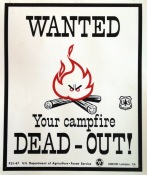

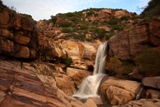
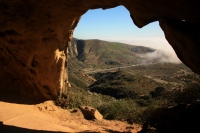

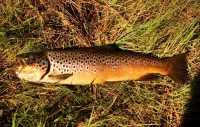
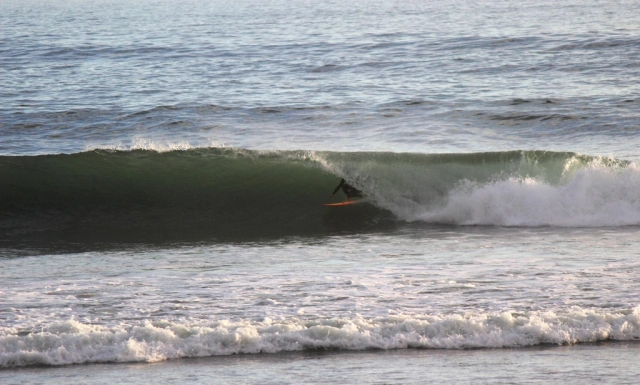
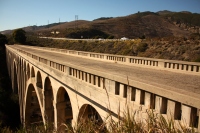
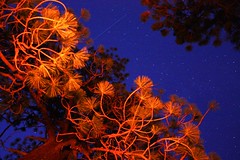








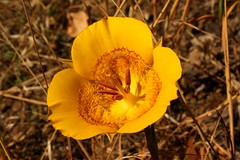









Wow. So glad you found it, Thank you for the pictures and the explanations.
At first I thought WordPress had got something crossed when I saw Jack Elliott of Santa Barbara on the Isle of Arran, Scotland! I love Arran – it’s a superb island – known as ‘Scotland in miniature’.
The unease you felt might be due to what I call the ‘atmosphere’ felt in many places where people used to live before ‘The Clearances’. It always seems to me that their spirit lingers on in the places they were cleared from. I’m almost sure that’s the case and a lot of other people feel it too. Usually, after I’ve felt ‘atmosphere’ in a place, I usually find some old shieling ruins or suchlike around me.
Carol.
Hey Carol. Interesting thought. I absolutely loved Arran.